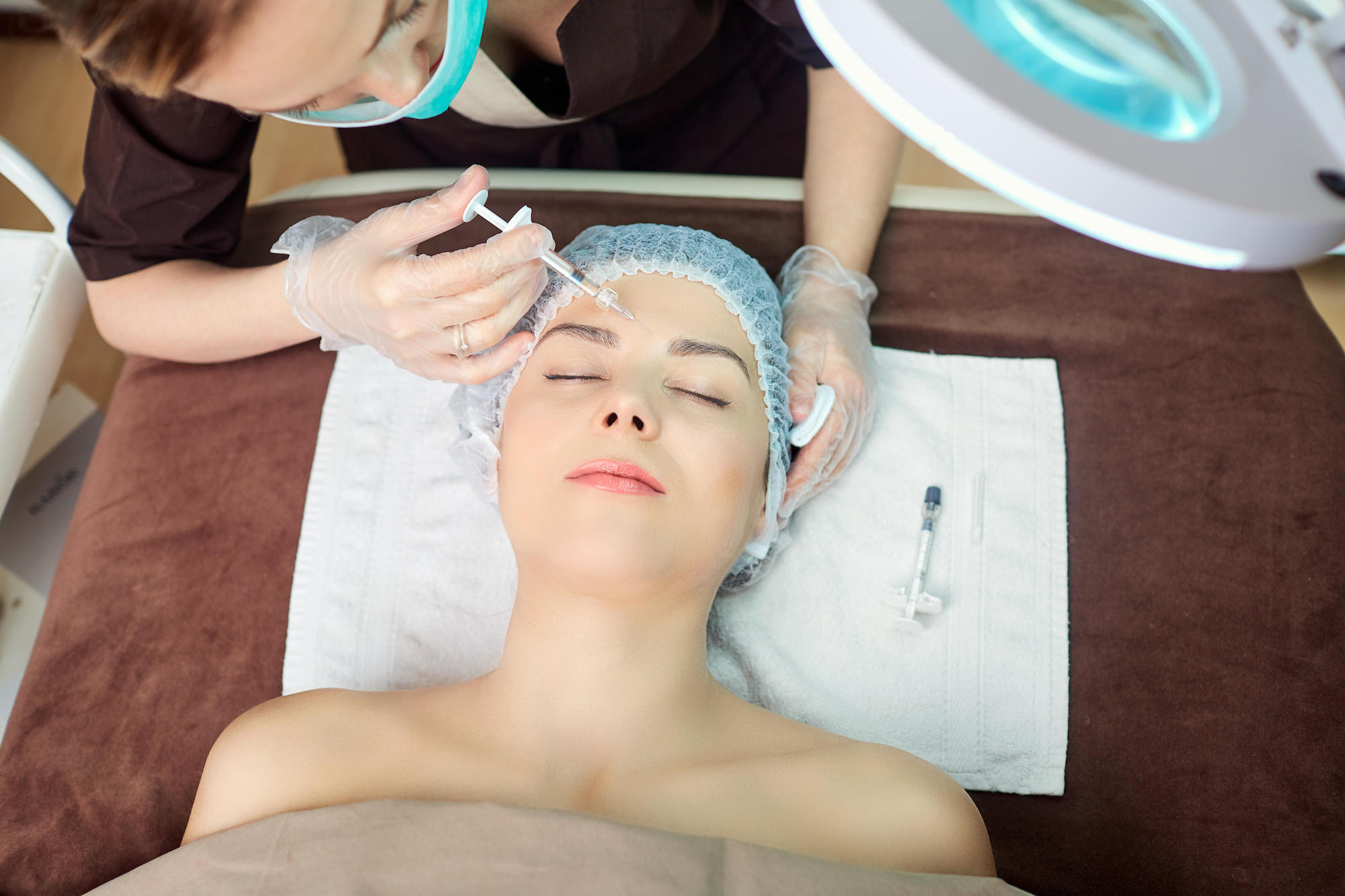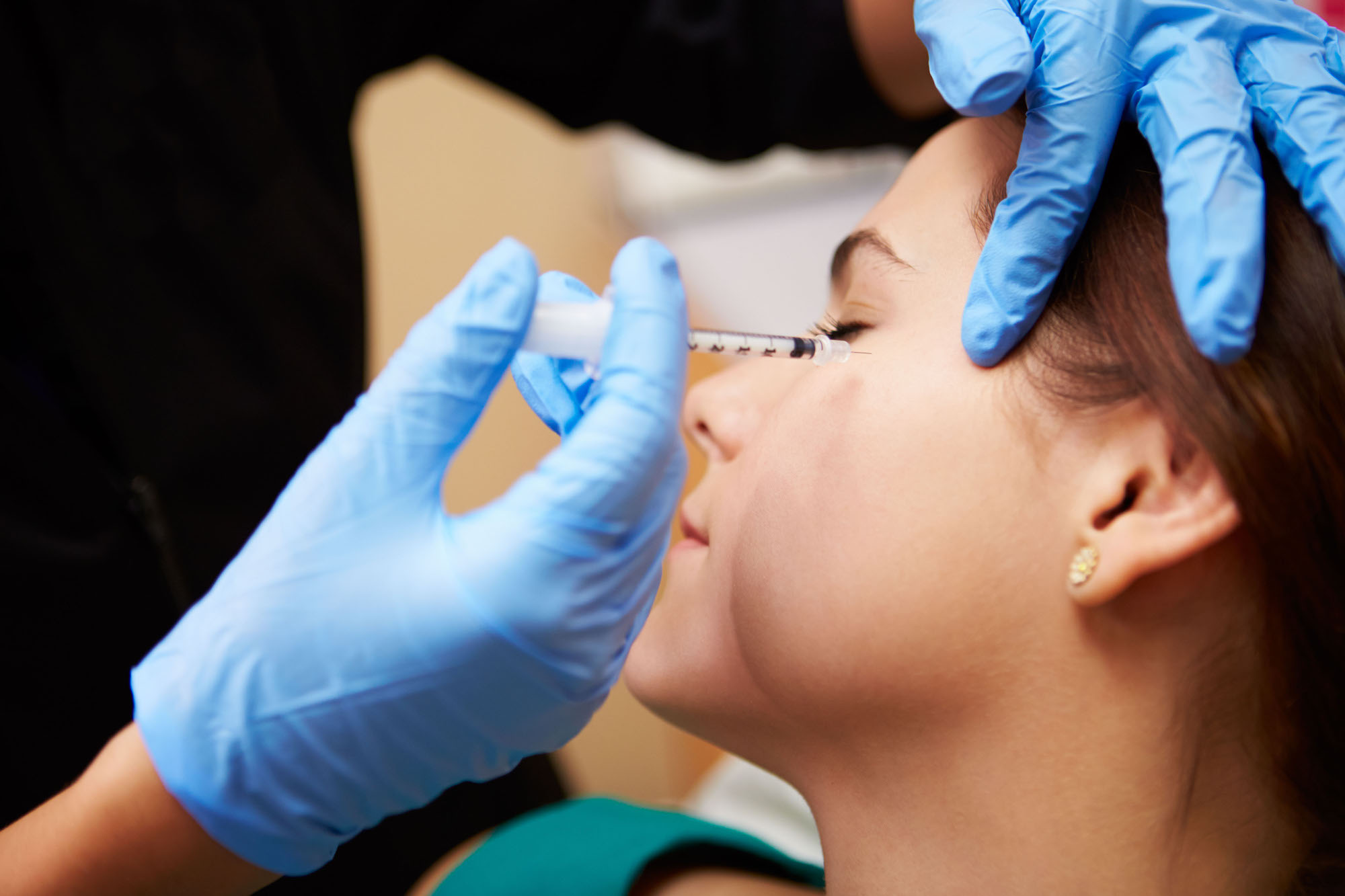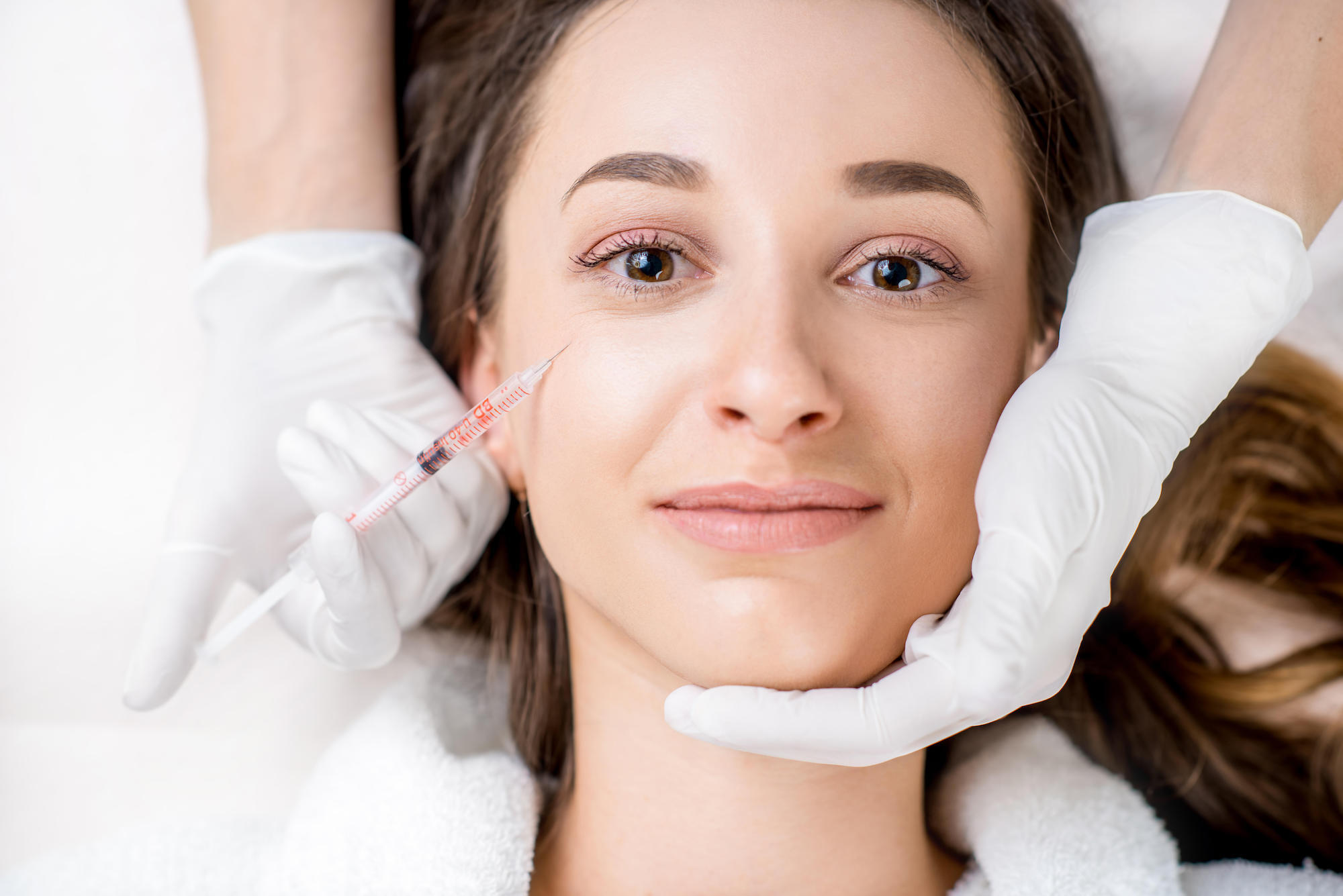Preventative Botox in Your Twenties ‘Is Just Self-Care’
Credit to Author: Jessica Furseth| Date: Thu, 25 Apr 2019 12:35:46 +0000
To age gracefully used to mean wearing sunscreen and drinking lots of water, but we’re living in a brave new world. Now that it’s so accessible, and increasingly less expensive, getting “a bit of botox” has become a part of some people’s self-care routines – the things we do for ourselves to make us feel good. “Self-care” might have started as a cup of tea or a massage, but botox, up 22 percent in usage since 2010, is rapidly becoming just another tool in the kit.
Botox (botulinum toxin), injected to avoid wrinkles by numbing the facial muscles, isn’t just for ageing rich white ladies anymore. Increasingly, younger women – and some men – are incorporating “baby botox” (just a little!) into their beauty routine a long time before they strictly need to. Preventative botox means you don’t so much get rid of wrinkles as stop them from ever forming in the first place.
“It’s part of my life now,” says Vicky, a beauty therapist in north London who first started getting botox at 24. After 11 years of injections she says she has no wrinkles, even when the botox starts to wear off between her twice yearly appointments. “I started it to prevent getting those deep lines between my eyebrows,” Vicky says, referring to what’s called “elevens” in the wrinkle lexicon. She says she’ll keep at it indefinitely, and she’ll talk about it openly: “I don’t keep it a secret. If somebody asks me if I’ve had any work done I’ll tell them I’ve had botox.” (While everyone I spoke to said they were open about using botox in daily life, they asked their surnames be omitted to maintain privacy on the internet.)
Vicky likes the way botox makes her feel – “and that’s it, really”. She might have been early to the preventative botox trend, but Vicky’s not that unusual anymore: the number of women (who make up 90 percent of botox users) who get injections between the ages of 19 and 34 has risen by 41 percent since 2011, according to The American Society for Aesthetic Plastic Surgery. The UK doesn’t have official figures, but practitioners report a similar trend.
Sarah, a project manager in Georgia, USA, who started getting botox two years ago at the age of 33, sees it as a “good long-term maintenance plan that isn’t going to totally change how I look, but is just going to keep things the same”. Sarah is very happy with the outcome: “It’s not incredibly noticeable. I can still move my eyebrows and wrinkle my forehead a little. When I smile you can see it in my face. I wouldn’t want to look frozen.”

Sarah’s description is pretty much how preventative botox is advertised to consumers. Dana Berkowitz, Associate Professor of Sociology at Louisiana State University, argues that the cosmetics industry is targeting increasingly younger people and creating lifetime consumers. “That’s not just for botox, but also things like dermal fillers too,” says Berkowitz, author of Botox Nation. Berkowitz says her research backs up her claim that botox is a gateway drug, “not just for cosmetic interventions, but in likelihood also for surgical interventions down the line”.
You could say there’s nothing wrong with that – that people should be able to do what they want with their own bodies. But Berkowitz argues that having botox isn’t the same as having a facial or a chemical peel. “Botox actually paralyses the face, prohibiting our ability to make expressions like scowling or furrowing the brow – things that evoke bitterness or anger. And women aren’t supposed to be bitchy or angry,” she says. Botox’s ability to suppress our expressions has other consequences, too: research from Barnard College in New York found that by numbing the face, botox also numbs our feelings, whether happy or sad, due to how sensory feedback from the face to the brain influences our moods.
Dr Rekha Tailor, botox practitioner and founder of the Health & Aesthetics clinic in Surrey, thinks differently: “Botox basically relaxes muscles and prevents bad habits. It’s an excellent preventative,” she says. Repetitive movement – like crinkling the skin around your eyes every time you smile – means you lose collagen, and that’s what eventually leads to the lines remaining visible when you’ve stopped smiling. “Botox isn’t going to make your skin produce collagen. But it stops that repetitive movement, so it stops the loss of collagen,” Dr Tailor explains, adding that getting botox once wrinkles are already there will soften them, but it won’t restore the collagen loss.
Dr Sheila Nguyen, botox practitioner at Beyond Medispa at Harvey Nichols in London, and former director of The London School of Facial Aesthetics, will assess the patient before administering preventative botox, as not everyone has the same risk profile. If you work outside or spend all day squinting into a computer, your face will be more affected. There’s genetic component too: if your mother has “marionette lines” around her mouth, you probably will too.
Botox is a prescription medicine in the UK – only a licensed medical practitioner should be administering it, but that’s not always the case (the US has similar problems with shoddy practices). Dr Nguyen says she always explains the risks to the patient, the financial burden should they choose to keep it up and the chance of botox resistance. But patients treat it pretty casually: “They talk about it like it’s just like another aspect of their daily skincare, like having a facial,” says Dr Nguyen. Concerns about being seen as vain, or not wanting anyone (including their husbands) to know, are more common in older women, she adds, while younger women often come in to be treated with their friends, or with colleagues during their lunch break: “They’re not at all embarrassed.”

Rebecca, an early childhood educator in New York, started getting botox six years ago, when she was 34: “It was almost too hard to pass up – I knew what I was up against with my father’s very large and wrinkly forehead.” For Rebecca, it’s not always an easy decision: “I get anxious about it. Every time, you’re taking a risk,” she says. Poorly administered botox can lead to droopy eyes and even blindness. “I don’t want something to be permanently damaged on my face just so I don’t have wrinkles,” adds Rebecca. She always braves it on the forehead, but doesn’t bother with botox (which is priced per area) anywhere else: “I don’t have any issues with the crow’s feet around my eyes, they don’t bother me.”
For Rebecca, botox isn’t about looking forever young – she’s actually never dyed her hair, which has been greying since her mid-twenties, and loves her half-black, half-silver shock of curls. It really is all about that wrinkly forehead.
Ross, a 22-year-old student in Florida who’s been getting botox since he was 17, says the same: “I was starting to get permanent lines on my forehead, which are definitely from my dad’s side”. Ross says his mother used to say to him: “You don’t want your dad’s forehead!” Ross had been seeing a dermatologist for years to combat acne, which is how he managed to get botox so young, and now gets injections every six months. “I definitely see this as a way to prevent something that I know would make me insecure in the future. It’s more for me than for anyone else,” he says, echoing the sentiment of everyone I spoke to.
Asked if he’ll still get botox when he’s 40, Ross thinks for a moment: “I were 40 I probably wouldn’t be doing it for the right reasons… but I also don’t think there’s a wrong reason, if it’s something that you’re insecure about and have the means to fix.” For now, Ross’s plan is to carry on: his parents will pay for it as long as he’s in education, and he says he’s got a good job lined up so he’ll be able to afford it.
Men still make up only about 10 percent of botox users. While Dr Nguyen says she’s seeing more men come through her doors, they tend to wait until the lines are already there instead of taking a preventative stance. Ross, however, sees botox as “a health thing” – he lifts weights and keeps his diet in check. “My derm calls botox ‘taking care of yourself’,” he says, with a laugh. Like most people I spoke to, Ross mentioned Instagram, Kim Kardashian and Kylie Jenner when asked why he thinks people are so much more casual about botox and fillers. “But I think people in my generation are just up for everything in general, including going under the needle,” he adds.
Carrie, a public relations professional in Leeds, says social media has been influential for her too. “When I take selfies I raise my brows a lot. I’m quite expressive,” she explains, adding that she started botox a year ago, at 25, after her mother got injections and was told it’s best to start young. “I’m a bit paranoid about wrinkles on my forehand. I’m still fresh-faced, but if I start now it might prevent it from being bad when I’m older.”
Carrie goes once every three to four months – trying to take advantage of New Year’s offers or two-for-one discounts for Mother’s Day – but it’s expensive. Right now, she’s doing extra work on the side to pay for it. Getting botox is common in Carrie’s friend group; she’s considered getting lip fillers, too, but decided not to. “You really see how easy it is to get things done and feel good instantly,” she says. “When it starts to wear off I notice it more in the mirror, and so I go back [for more] right away. You just want to look your best, so you keep going.”

Social media means that we live our lives a lot more openly; the things we used to do in private we now do far more publicly. On Instagram, the Kardashians explain exactly how they achieve their flawless looks. You may have no desire to look like Kim or Kylie, but also: who wants to look old and haggard? “Selfie culture means you’re constantly seeing images of yourself, and there’s only so many filters you can use. That is going to contribute to the rise of botox,” says Dana Berkowitz. She tells me that during her book research she was accused of being “negligent” for not taking care of herself by getting botox: “I was told I was failing at responsible femininity.”
The trend of botox and fillers has co-opted some of the language of the body positivity movement. “People would tell me that botox is empowering, that it’s democratisation of beauty, that it’s levelled the playing field,” says Berkowitz. “It’s like, ‘You don’t have to do this, but you can. And therefore, you should.'” She does think, however, that we are seeing the beginnings of a backlash: “But oftentimes, backlash will happen among people who already have beauty privilege, or class privilege.” She points to how actors like Kate Winslet have taken a strong stand against botox, but adds that they’re probably getting weekly facials so will still look better than most.
People – women, especially – aren’t supposed to be vain and frivolous, but they’re not supposed to get old either. In that sense, refusing to be ashamed or secretive about getting botox can certainly be empowering. But Berkowitz says botox is contagious: a group of women may feel just fine about “ageing gracefully”, but if one of them starts botox, you risk a domino effect. If no one else is ageing, would you want to be the only one?
And if you do start at it, one rule holds true: never should you look like you’ve had botox. You’re supposed to look natural, and ideally you should look like you haven’t had any work done at all.
This article originally appeared on VICE UK.